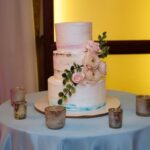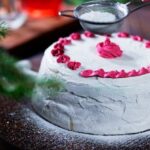Fondant cakes are not only known for their smooth and sleek appearance but also for the endless possibilities they offer in terms of decoration. One popular method of decorating fondant cakes is using royal icing, a versatile and easy-to-use medium that allows for intricate designs and details. In this article, we will guide you on how to decorate a fondant cake with royal icing, from preparing the base to adding finishing touches.
Royal icing is a crucial component when it comes to decorating fondant cakes as it provides a sturdy and glossy finish that can elevate the overall look of your creation. By mastering the art of using royal icing, you can achieve professional-looking decorations that will impress your guests and make your cake stand out. From delicate piping work to vibrant colors, royal icing offers a range of possibilities for creating stunning designs on fondant cakes.
Whether you are a beginner or an experienced baker looking to enhance your decorating skills, learning how to use royal icing on fondant cakes is essential. In the following sections, we will cover everything you need to know about this process, including the tools and ingredients required, step-by-step instructions on preparation, tips for making royal icing from scratch, various piping techniques, design ideas, coloring tips, finishing touches, and troubleshooting common issues.
Let’s dive into the art of decorating fondant cakes with royal icing and unleash your creativity in the kitchen.
Tools and Ingredients
Decorating a fondant cake with royal icing requires the use of specific tools and ingredients to achieve stunning results. To begin, you will need a few essential tools such as piping bags, piping tips, a turntable for easy maneuvering, and a bench scraper for smoothing out the fondant. Additionally, having a good quality rolling pin is crucial for evenly rolling out the fondant to cover the cake seamlessly.
When it comes to ingredients, royal icing typically consists of egg whites or meringue powder, powdered sugar, and water. It is important to use fresh egg whites or meringue powder to ensure stability and consistency in your royal icing. Powdered sugar should be sifted beforehand to avoid any lumps that may affect the smoothness of the icing. And don’t forget food coloring gels to add vibrant hues to your decorations.
To create intricate designs on your fondant cake with royal icing, you can also make use of stencils, edible pearls or dragees, and edible gold or silver leaf for added elegance. These additional tools and ingredients will help elevate your cake decorating game and allow you to explore various creative possibilities.
With the right tools and ingredients at hand, you’ll be well-equipped to turn your fondant cake into a work of art that will impress everyone at any event.
| Tools | Ingredients |
|---|---|
| Piping bags | Egg whites or meringue powder |
| Piping tips | Powdered sugar |
| Turntable | Water |
| Bench scraper | Food coloring gels |
Preparing the Fondant Base
Fondant cakes are known for their smooth and polished finish, making them a popular choice for special occasions. To achieve a flawless look when decorating a fondant cake with royal icing, it is crucial to start with a well-prepared fondant base. This section will provide you with step-by-step instructions on how to properly cover a cake with fondant to create a smooth canvas for your royal icing decorations.
Rolling Out the Fondant
Before you can cover your cake with fondant, you need to roll it out to the appropriate thickness. Dust your work surface with powdered sugar or cornstarch to prevent sticking, then use a rolling pin to roll out the fondant into a large circle that is slightly larger than the diameter of your cake. Aim for an even thickness throughout to ensure smooth coverage.
Applying Fondant to the Cake
Once you have rolled out the fondant, carefully lift it using a rolling pin and drape it over your cake. Gently smooth the fondant down the sides of the cake, working from the top down to prevent air bubbles from forming. Use fondant smoothers or your hands to press the fondant against the cake and eliminate any wrinkles or creases. Trim off any excess fondant at the base of the cake using a sharp knife.
Finishing Touches
To achieve a perfectly smooth finish, use a fondant smoother or paddle gently over the surface of the covered cake. Pay attention to any imperfections or blemishes and use your fingers or tools to fix them as needed. Once you are satisfied with the appearance of your covered cake, allow it to set for some time before proceeding with decorating it using royal icing as per our upcoming sections on piping techniques and creating designs.
With these basic steps on how to prepare a fondant base for decorating using royal icing, you are one step closer to creating stunning and professional-looking cakes that will surely impress your friends and family alike. Following these instructions will help ensure that your decorations stand out on top of a smooth canvas, making all your hard work truly shine in every bite of deliciousness.
Making Royal Icing
Royal icing is a crucial element in decorating fondant cakes, as it allows for intricate designs and detailing that can elevate the overall look of the cake. Making royal icing from scratch may seem daunting at first, but with the right tools and techniques, you can create a smooth and workable consistency for your decorations.
Ingredients and Tools
Before you start making royal icing, gather all the necessary ingredients including confectioners’ sugar (powdered sugar), meringue powder, water, and flavoring extracts if desired. Additionally, make sure to have a stand mixer or hand mixer with whisk attachment, mixing bowls, spatula, and piping bags with different tips for piping.
Step-by-Step Guide
To make royal icing, start by sifting the confectioners’ sugar to remove any lumps. In the bowl of your stand mixer, combine the sugar with meringue powder and mix on low speed until well combined. Slowly add water while mixing on low speed until you reach your desired consistency – stiff peaks for outlining and flooding consistency for filling in areas. Be sure not to overmix as it can cause air bubbles in your royal icing.
Tips for Achieving the Right Consistency
If your royal icing is too thick, add a few drops of water at a time until it reaches the desired consistency. On the other hand, if it’s too thin, gradually add more confectioners’ sugar until it thickens up.
Remember that royal icing dries quickly once exposed to air, so cover unused portions with plastic wrap or a damp cloth to prevent it from hardening. With practice and patience, you’ll be able to master the art of making royal icing for decorating fondant cakes with precision and creativity.
Piping Techniques
Once you have outlined your design, flooding is the next technique used to fill in the enclosed areas with royal icing. To flood an area, use a slightly thinner consistency of royal icing and carefully pipe it within the outlines created earlier.
Use a toothpick or small spatula to spread the icing evenly and ensure all gaps are filled. The flooding technique allows you to add colors and textures to your design, bringing depth and dimension to the overall look of the cake.
Detailing is where creativity truly shines when decorating a fondant cake with royal icing. This technique involves adding intricate patterns, textures, and fine details to enhance the design further. Whether it’s delicate lace patterns, intricate scrollwork, or tiny dots and swirls, detailing adds a layer of sophistication to your cake decorations.
Experimenting with different piping tips and varying pressure can help you achieve different effects and bring uniqueness to each creation. With practice and patience, you can develop your own signature style through detailing with royal icing on fondant cakes.
Creating Designs
When it comes to decorating a fondant cake with royal icing, the design possibilities are truly endless. From elegant lace patterns to whimsical floral motifs, royal icing allows you to add intricate details and stunning designs to your cakes.
One popular technique is using a piping bag fitted with different tips to create outlines, fillings, and textures on the smooth surface of fondant. Experimenting with various piping techniques can help you achieve unique and personalized decorations that will make your cake stand out.
To create beautiful designs on your fondant cake with royal icing, consider practicing basic piping techniques such as outlining, flooding, and detailing. Outlining involves using a thin consistency of royal icing to trace the edges of your design or pattern. This helps define the shape and structure before moving on to filling in the details.
Flooding is the process of using a slightly thicker royal icing to fill in larger areas within the outline, creating a smooth and seamless finish. Detailing involves using a fine tip or smaller opening in the piping bag to add intricate embellishments or accents to your design.
If you’re looking for inspiration for your fondant cake decorations, consider incorporating classic elements like scrolls, swirls, dots, or scallops using royal icing. You can also draw inspiration from nature by creating delicate flowers, leaves, or vines with different shades of colored royal icing.
Additionally, geometric patterns such as chevrons, stripes, or polka dots can add a modern touch to your cake design. By combining different techniques and designs, you can create a visually stunning masterpiece that reflects your creativity and style.
| Piping Technique | Description |
|---|---|
| Outlining | Using thin consistency of royal icing to trace edges of design |
| Flooding | Filling in larger areas within outlines for smooth finish |
| Detailing | Adding intricate embellishments or accents with fine tip piping |
Coloring Royal Icing
When it comes to decorating a fondant cake with royal icing, one of the key elements is creating eye-catching colors to make your designs pop. Coloring royal icing may seem like a simple task, but achieving vibrant hues requires some skill and knowledge. Here are some tips to help you master the art of coloring royal icing for your fondant cake decorations:
- Start with a white base: Before adding any color to your royal icing, make sure you have a clean, white base to work with. This will allow the colors to stand out and prevent any muddiness in your final decorations.
- Use gel food coloring: Gel food coloring is preferred over liquid food coloring when it comes to royal icing as it provides more intense colors without adding additional liquid. Start by adding a small amount of gel color and gradually increase until you achieve your desired shade.
- Adjust the consistency: Depending on the design you’re working on, you may need different consistencies of royal icing. Thicker icing is ideal for outlining details, while thinner icing works well for flooding larger areas. Add water or confectioners’ sugar as needed to adjust the consistency of your colored royal icing.
Experimenting with different color combinations and techniques can help you create unique and visually appealing decorations for your fondant cake. Whether you’re going for a subtle pastel palette or bold and bright hues, mastering the art of coloring royal icing will elevate your cake decorating skills and impress your guests.
Remember that practice makes perfect when it comes to coloring royal icing, so don’t be afraid to try out new techniques and experiment with different shades. With these tips in mind, you’ll be well on your way to creating stunning designs on your fondant cakes that are sure to wow everyone at the party.
Finishing Touches
Achieving a beautifully decorated fondant cake with royal icing involves more than just piping techniques and designs. The finishing touches play a crucial role in elevating the overall look of the cake, adding depth, texture, and visual interest. In this final stage of decorating, attention to detail is key to creating a truly stunning work of edible art.
One popular way to add embellishments to a fondant cake is by incorporating edible decorations such as fondant flowers, bows, pearls, or even edible gold or silver accents. These embellishments can be made ahead of time using molds or cutters, allowing for intricate details that enhance the overall design of the cake. By carefully placing these edible decorations on the cake’s surface, you can create a focal point or add delicate accents that complement the royal icing piping.
In addition to edible decorations, textures can also play a significant role in finishing off a fondant cake with royal icing. By using textured mats, stencils, or even fabric impressions on the fondant surface before applying royal icing designs, you can create intricate patterns and designs that mimic luxurious fabrics or intricate lace.
These textures add dimension to the cake’s appearance and can take your decoration to the next level. Experimenting with different textures and techniques can help you achieve a unique and visually appealing finish for your fondant cake decorated with royal icing.
Troubleshooting
In conclusion, decorating a fondant cake with royal icing can truly elevate the look and overall appeal of your creation. From intricate designs to vibrant colors, royal icing offers endless possibilities for decorations that are sure to impress. By following the step-by-step guide provided in this article, you can learn how to achieve professional-looking results and create stunning cakes for any occasion.
As with any creative process, there may be some hurdles along the way when decorating a fondant cake with royal icing. Whether it’s dealing with air bubbles in the icing, having difficulty achieving the right consistency, or facing challenges with intricate piping techniques, knowing how to troubleshoot common issues is essential for a flawless finish.
By being prepared and equipped with the right knowledge and techniques, you can overcome these obstacles and create a beautifully decorated cake that will leave a lasting impression.
In essence, mastering the art of decorating a fondant cake with royal icing takes practice, patience, and attention to detail. With the right tools, ingredients, and techniques at your disposal, you can unleash your creativity and bring your cake decorating skills to new heights.
So go ahead and explore different designs, experiment with colors, and don’t be afraid to try out new piping techniques. With determination and a bit of finesse, you’ll soon be creating stunning fondant cakes that are not only visually appealing but also delicious works of art that will delight anyone who sees them.
Frequently Asked Questions
Can You Decorate a Fondant Cake With Royal Icing?
Decorating a fondant cake with royal icing is not typically recommended. Fondant and royal icing have different textures and consistencies, which can make it challenging to achieve the desired look. It’s best to stick with using either fondant or royal icing for decorating.
Can You Stick Fondant to Royal Icing?
It is possible to stick fondant to royal icing, but it may not always be the most secure method. Due to their differing textures and consistencies, it might be challenging to get the fondant to adhere well to the royal icing. Using a small amount of water or edible glue can help create a better bond between the two.
Can I Put Icing on Top of Fondant?
Putting icing on top of fondant is feasible, but there are some factors to consider. The moisture in the icing can cause the fondant to soften or dissolve if left for too long, so it’s best to apply the icing just before serving.
Additionally, certain types of icing may not adhere well to the smooth surface of fondant, so you may need to use a small amount of water or edible glue for better adherence.

Welcome to my blog about home and family. This blog is a place where I will share my thoughts, ideas, and experiences related to these important topics. I am a stay-at-home mom with two young children. I hope you enjoy reading it! and may find some helpful tips and ideas that will make your home and family life even better!





